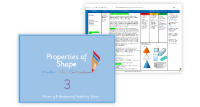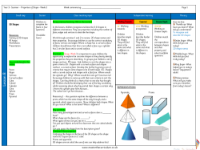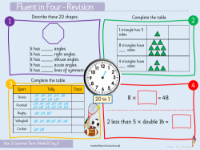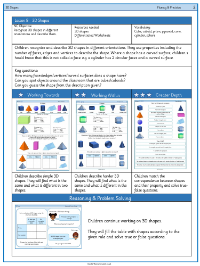Properties of shape - 3D shapes - Presentation
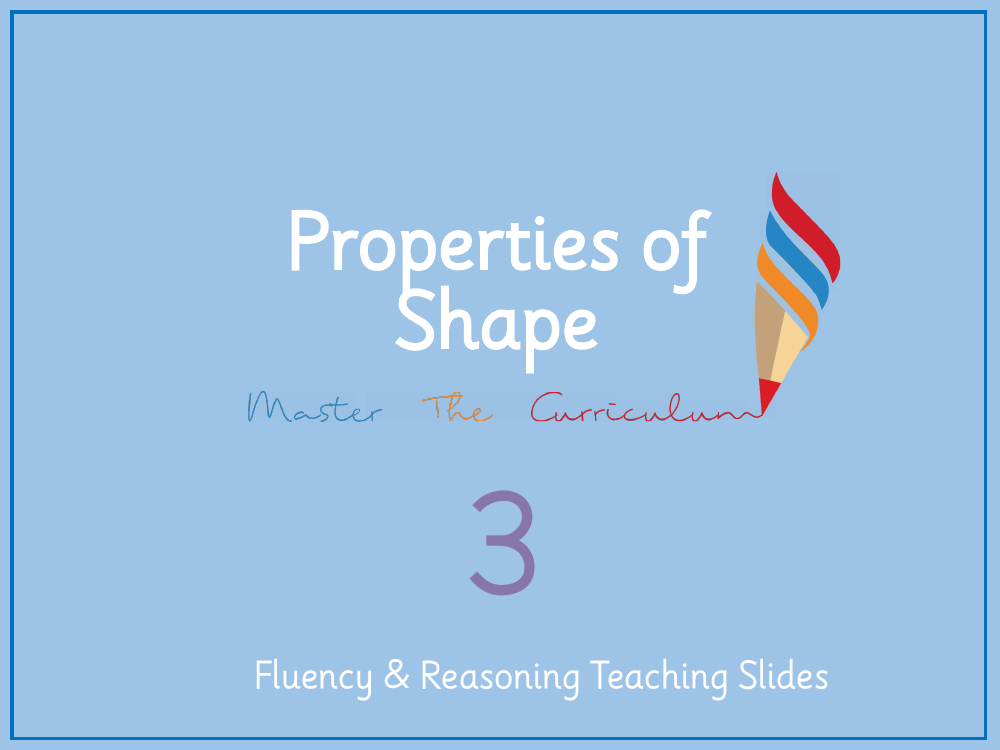
Maths Resource Description
In a comprehensive lesson on the properties of 3D shapes, students are encouraged to explore and understand the characteristics that define three-dimensional objects. The lesson starts with a discussion prompt, asking students to consider the differences between 2D and 3D shapes. This sets the stage for a deeper investigation into the number of faces, edges, and vertices that various 3D shapes possess. The first activity challenges students to identify a 3D shape based on these properties, with a cuboid being used as an example—described as having 6 faces, 12 edges, and 8 vertices. Students are tasked with filling in the blanks for other shapes, applying their knowledge to deduce the correct characteristics.
Further activities involve group discussions, where students work together to identify shapes based on given clues, such as the number of faces, edges, and vertices. Shapes like the square-based pyramid, cylinder, and cone are used as examples to facilitate learning. The lesson also includes reasoning exercises, where students are prompted to agree or disagree with statements about 3D shapes, such as whether all 3D shapes are prisms, and to consider the properties of shapes described by their peers. Independent work encourages students to sort 3D shapes, compare their properties, and describe shapes to partners to see if they can be correctly identified. These exercises not only reinforce the students' understanding of 3D shapes but also develop their reasoning and communicative skills in the context of geometry.

